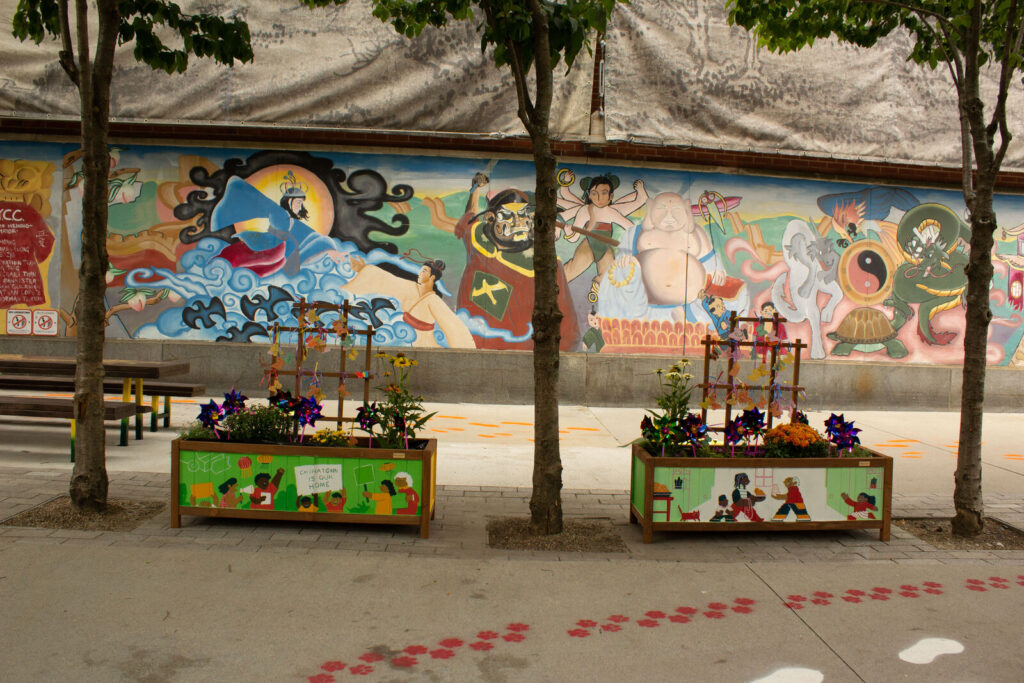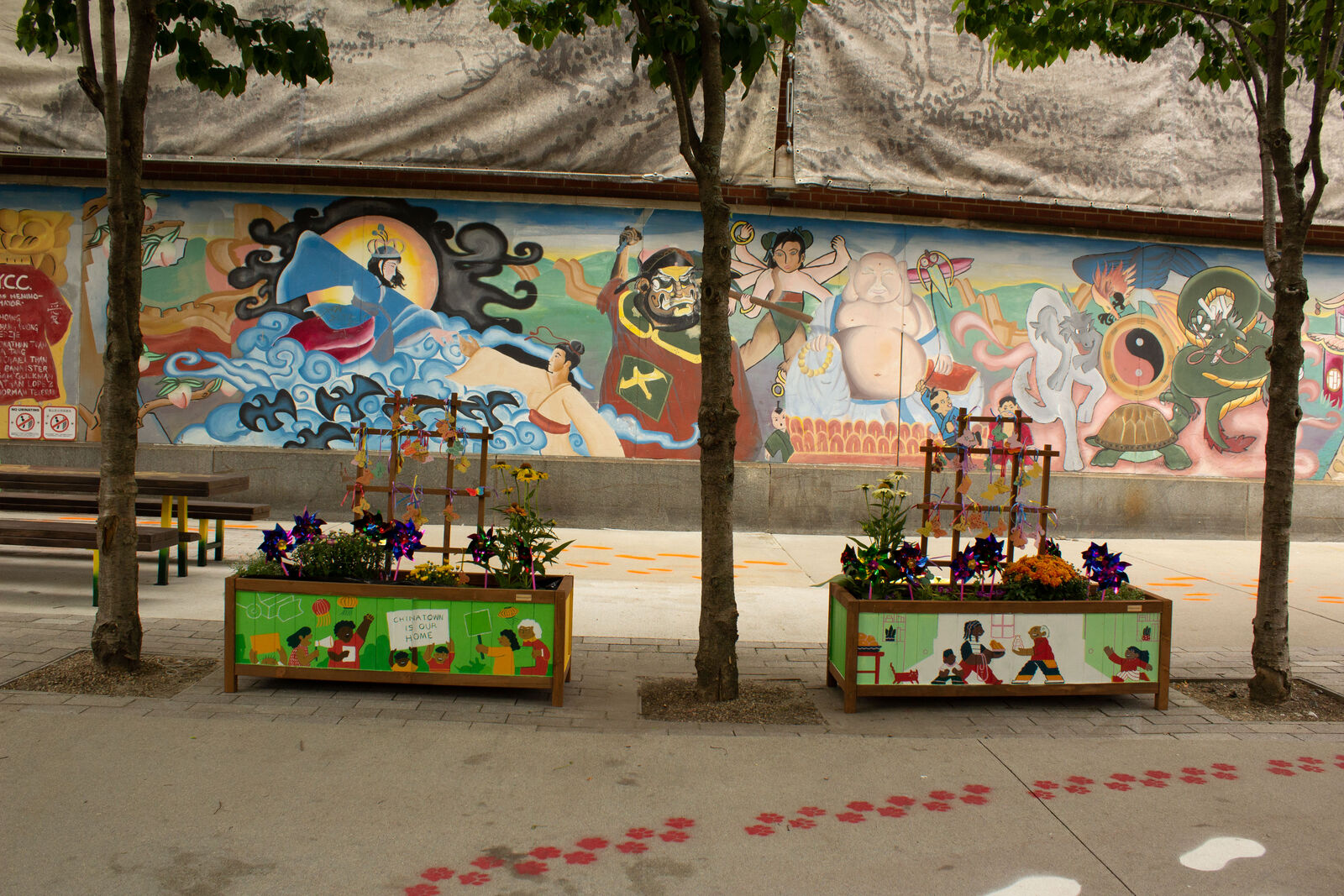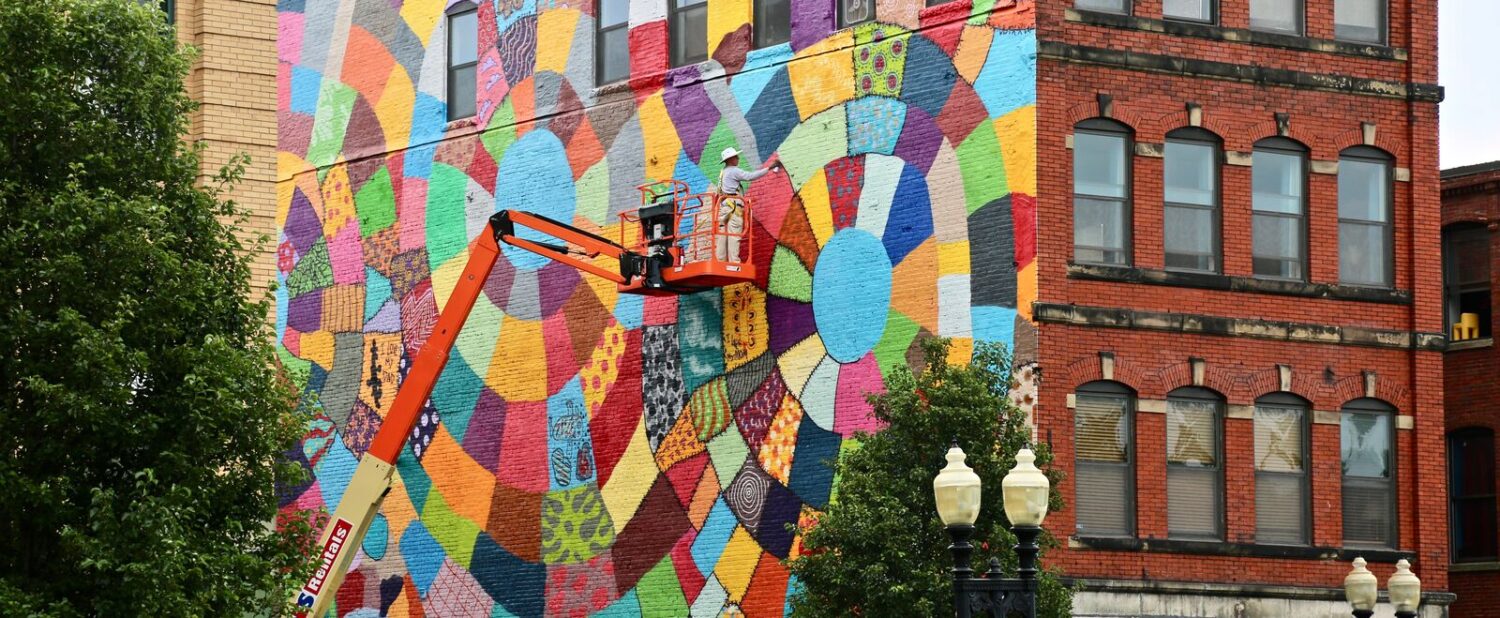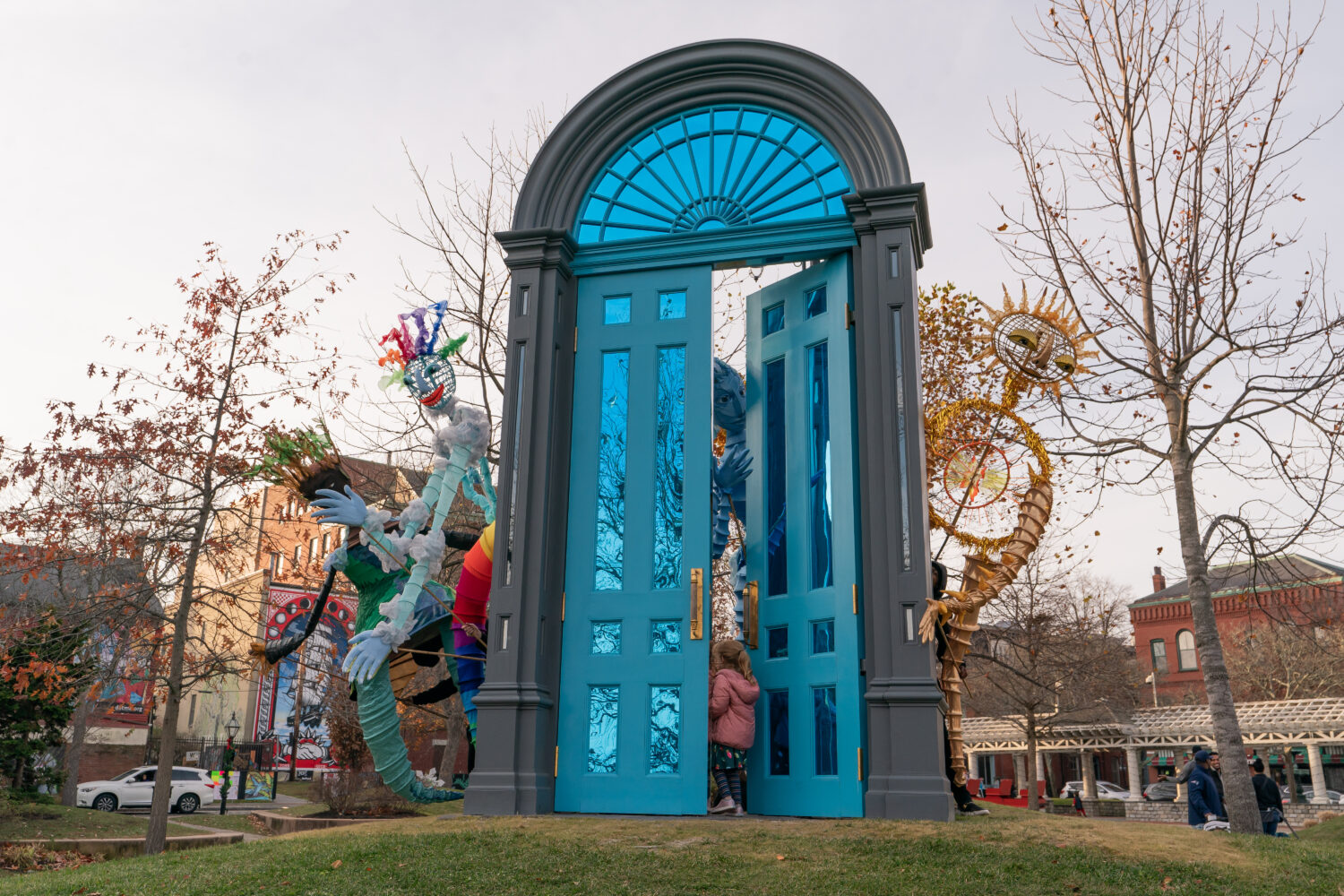How MASS MoCA’s Assets for Artists program pursued racial equity through BIPOC artists workshops
Written by Heidi Shin
Yuko Okabe, a Japanese American illustrator, settled in her Medford apartment, with her grandmother’s paint brushes, a mug of genmaicha tea, and paper for doodling. She exhaled, logging onto Zoom for the online workshop: “Taking Collective Action to Build Community and Fight Racism,” an online workshop for BIPOC artists, hosted by Assets for Artists, a program of The Massachusetts Museum of Contemporary Art (MASS MoCA), the iconic art museum in Western Massachusetts.
Since the rise in the Black Lives Matter movement and the attacks against Asian Americans during the pandemic, Yuko had been seeking an artists’ affinity space like this one offered by this workshop.
The participants nodded at a familiar comment. They were glad that arts institutions were calling on them to create work during the pandemic, but they were all being asked to create work about the same topic: their racial trauma. This for mostly white audiences in spaces that many in their BIPOC communities could not easily access.
On one hand, it was an invitation to give voice to their experiences, but at the same time, many BIPOC artists questioned the arts’ institutions intentions. Some felt commodified and put at the center of marketing and fundraising campaigns for mostly white-led arts institutions, as part of the organizations’ responses to the racial tensions in the country.
“There are affluent white led organizations that want to present Black and brown stories. They want to show that they did some kind of good,” Yuko shared. “They’ll have this nice gallery opening, but their gallery isn’t accessible or inviting to the people they’re trying to represent.”
Why did the art need to be solely about their trauma, the BIPOC artists at the workshop questioned. Could we analyze who the call for art was coming from, and how and why they wanted to present the work?
The Assets for Artists’ BIPOC artists workshop, held online via Zoom in November 2020, was an affinity space for BIPOC artists to discuss issues precisely like these.
During the pandemic, Assets for Artists (A4A), a program of MASS MoCA set out to pursue racial equity at their institution in a number of ways: by increasing the number of BIPOC workshop facilitators and participants, by hosting a BIPOC specific artists’ residency, by developing an advisory board with six of its eight members being BIPOC artists, and more.
Also, rather than independently devising new programs, Assets for Artists chose to partner with existing BIPOC artists and arts organizations, so that each partner could bring their strengths to the table.
From their anti-racist work, they learned that true partnership between arts institutions and BIPOC artists included the following:
- Trusting partners fully with decision-making
- Ensuring fair pay
- Building relationships over time vs. one-off events
This story highlights the work of the BIPOC artist workshops, led by artist facilitators Daniel Park and Deen Rawlins-Harris. A4A Director Blair Benjamin and Assistant Director Molly Rideout led the Assets for Artists team in this partnership.
“It was much more of a learning experience for us,” Molly shared, “as to how a majority white staff can turn over the decision-making (to BIPOC artists).”
Throughout the planning processes, the Assets for Artists team asked: What does a true partnership with BIPOC artists look like?
In developing the BIPOC artist workshops, a priority for the Assets for Artists team was to have their BIPOC partners – artist facilitators Daniel Park and Deen Rawlins-Harris – take the lead. Daniel and Deen developed the workshop’s agendas and curriculum, and set the tone and direction for the anti-racist work.
“Assets for Artists, they have said this themselves, is a very white-staffed program.” shared Daniel Park, who is multi-racial. “They were actually some of the best that I’ve ever experienced at trusting that we were going to do (what we had proposed) and that it was going to be successful.”
Daniel Park and Deen Rawlins-Harris noted that the courses were not intended to educate white arts administrators or to further their DEI initiatives, rather the aim was to create an affinity space for BIPOC artists, who already understood what it was like to live with systemic racism.
“This was more like a space for us to process things,” participating artist Yuko shared, “Not to be put on a pedestal and be part of a campaign or fundraising.”
In fact, the Assets for Artist staff chose not to attend the workshops themselves and even hired a person of color to provide tech support during the online gatherings. This helped to create a safer affinity space for the artists, where they could speak freely about their experiences.
“So there was something that I just really appreciated about them,” Daniel Park continued. “Putting all of that trust into us, especially as a first year collaboration.”
The mission of Assets for Artists is to help artists to become business people, to teach them how to file taxes, become legal entities, and such. But for many artists, regardless of race, commercializing their art work can be a hard choice.
“They lack the confidence and there’s an aversion to it,” Molly Rideout from Assets for Artists noted. “Because finances for many equals capitalism and capitalism equals bad and selling out.”
Many see their art as a form of personal expression or passion, rather than a source of income, and this can lead others to believe: “Oh, they’ll work for little or free because they just love the art so much.”
Deen Rawlins-Harris and Daniel Park hoped that through their workshops, BIPOC artists in particular would recognize the value of their own work, know their rights, and be paid fairly, in an industry where there has been historic pay inequity, based on race and gender.
Daniel Park shared being an anti-racist organization means this: “Talking about money transparently and openly and with heart.”
Deen Rawlins-Harris added: “We want artists to create the best work possible, and in order to do that they have to be meeting their basic needs, through paying them appropriately and getting them funding. Sometimes by giving them funding in advance in order for them (to meet their needs.)”
A4A’s Blair Benjamin and Molly Rideout noted that many BIPOC artists are self-taught and may not have attended art school or university, where they learned how to write an artists’ statement or the language of the art world, also known as “gallery speak.”
“Self-taught artists don’t talk about the work in the way that the art world has been told, like, this is what counts as the appropriate way to talk about art,” Molly Rideout shared.
Pursuing a career as an artist also often requires taking creative and financial risks, and artist Yuko Okabe noted: “That can be supported by having networks and people who already have those connections or have generations of other people who had built those connections for them.”
Other parameters can also limit who qualifies for an artists’ grant or residency, for example geography. Workshop leader Deen Rawlins-Harris noted that some opportunities are only open to Boston residents, but they pointed out that many BIPOC artists can no longer afford to live in the City of Boston, due to historic zoning practices and socio-economic disadvantages.
The workshop and residency organizers considered these many factors, to ensure that their programming was accessible to all.
Lastly, Deen and Daniel, as the online workshops leaders, ensured that participating BIPOC artists could continue the conversations and relationships that their workshop helped to start. MASS MoCA provided funding not only for the workshop itself, but for follow-up gatherings (such as an in-person picnic and an ongoing yoga class), so that there would be funded and structured opportunities for workshop participants to continue to build their community and their social networks.
It’s also significant to note this: Assets for Artists didn’t seek to organize one-off events in response to current events. Their relationships with BIPOC artists and organizations began before the pandemic and continue even now. The racial reckoning with the Black Lives Matter movement and the Stop Asian Hate movement accelerated MASS MoCA’s anti-racist efforts and made it even more urgent.
Also, key to these partnerships was handing the leadership reigns to the BIPOC partners, who best understood their communities’ needs.
“The art museum that we’re working within is definitely an overwhelmingly white institution.” A4A’s Molly Rideout shared, “So that was something that we really needed to acknowledge and step back and listen to the (BIPOC) artists that we serve.”
Yuko Okabe, the Japanese American artist who attended the BIPOC artists’ workshop, shared another example of how to change the existing dynamic between art institutions and BIPOC artists, to ensure that a mostly white-led arts’ institution isn’t commodifying the racial trauma of BIPOC artists.
In 2021, Yuko joined the annual Residence Lab Program with the Pao Arts Center and Asian Community Development Center (CDC) in Boston’s Chinatown to co-produce an art installation about mutual aid. This was done in collaboration with artist Kathy Wu and two local Chinatown residents. The installation work was exhibited in Mary Soo Hoo Park, a public space by the Chinatown gates, rather than in a mostly white-accessible art gallery.

Yuko encourages mostly white-led arts institutions to partner with more BIPOC artists in the institution’s community engagement efforts, since BIPOC artists may have existing relationships and understand the community. But it’s important to pay artists for their time and expertise, as they lead this type of outreach, she noted.
These types of experiences have led Yuko Okabe to ask: What are other ways that arts institutions can take the time to build ongoing relationships with the BIPOC community whose artwork they’re featuring?
Molly Rideout from Assets from Artists said that she wished she had been bolder about equity work sooner. Could she have spoken up when their organization’s marketing materials excluded BIPOC images or voices? Or on the flip side, could she have said something when they included BIPOC images but in a way that was tokenizing?
“Don’t be afraid of speaking up for fear of making a mistake or thinking other people won’t agree,” Molly reflected. It’s better to begin the work, and if you say the wrong thing, learn from the experience and continue with the work.
Daniel Park shared this helpful advice about partnering with BIPOC artists around race and equity issues: “You make sure by being very prepared and being very ready to be wrong and change things.”
Both partnering groups hope to continue this work together in the future.
To learn about A4A’s other anti-racist equity efforts, including increasing the number of BIPOC workshop facilitators and participants, and creating a BIPOC artists’ advisory board, click here.



